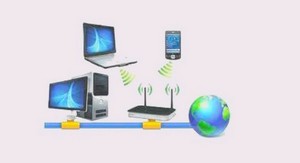1.SCOPE
2.DOCUMENT STATUS
2.1 COPYRIGHT NOTICE
2.2 ERRATA
2.3 COMMENTS
3.REFERENCES
3.1 NORMATIVE REFERENCES
3.2 INFORMATIVE REFERENCES
4.DEFINITIONS AND ABBREVIATIONS
4.1 DEFINITIONS
4.2 ABBREVIATIONS
5. BACKGROUND
5.1 MOTIVATION
5.2 REQUIREMENTS
6.ARCHITECTURE OVERVIEW
6.1 THE WORLD-WIDE WEB MODEL
6.2 THE WAP MODEL
6.3 EXAMPLE WAP NETWORK
6.4 SECURITY MODEL
7.COMPONENTS OF THE WAP ARCHITECTURE
7.1 WIRELESS APPLICATION ENVIRONMENT (WAE)
7.2 WIRELESS SESSION PROTOCOL (WSP)
7.3 WIRELESS TRANSACTION PROTOCOL (WTP)
7.4 WIRELESS TRANSPORT LAYER SECURITY (WTLS)
7.5 WIRELESS DATAGRAM PROTOCOL (WDP)
7.6 BEARERS
7.7 OTHER SERVICES AND APPLICATIONS
7.8 SAMPLE CONFIGURATIONS OF WAP TECHNOLOGY
8.COMPLIANCE AND INTEROPERABILITY
9.FUTURE WORK ITEMS
1. Scope
The Wireless Application Protocol (WAP) is a result of the WAP Forum’s efforts to promote industry-wide specifications for technology useful in developing applications and services that operate over wireless communication networks. WAP specifies an application framework and network protocols for wireless devices such as mobile telephones, pagers, and personal digital assistants (PDAs). The specifications extend and leverage mobile networking technologies (such as digital data networking standards) and Internet technologies (such as XML, URLs, scripting, and various content formats). The effort is aimed at enabling operators, manufacturers, and content developers to meet the challenges in building advanced differentiated services and implementations in a fast and flexible manner.
2. Document Status
This document is available online in the following formats:
•PDF format at http://www.wapforum.org/.
2.1 Copyright Notice
© Copyright Wireless Application Protocol Forum, Ltd, 1998. All rights reserved.
2.2 Errata
Known problems associated with this document are published at http://www.wapforum.org/.
2.3 Comments
Comments regarding this document can be submitted to the WAP Forum in the manner published at http://www.wapforum.org/.
3. References
3.1 Normative References
[RFC2119] « Key words for use in RFCs to Indicate Requirement Levels », S. Bradner, March 1997.URL: ftp://ftp.isi.edu/in-notes/rfc2119.txt
[WAEoview] « Wireless Application Environment Overview », WAP Forum, April 30, 1998. URL:http://www.wapforum.org/
[WAE] « Wireless Application Environment Specification », WAP Forum, April 30, 1998. URL:http://www.wapforum.org/
[WAP] « Wireless Application Protocol Architecture Specification », WAP Forum, April 30, 1998 URL: http://www.wapforum.org/
[WAPConf] « Wireless Application Protocol Conformance Statement, Compliance Profile, and Release List », WAP Forum, April 30, 1998. URL: http://www.wapforum.org/
[WDP] « Wireless Datagram Protocol Specification », WAP Forum, April 30, 1998. URL:http://www.wapforum.org/
3.2 Informative References
[ECMAScript] Standard ECMA-262: « ECMAScript Language Specification », ECMA, June 1997 [HTML4] « HTML 4.0 Specification, W3C Recommendation 18-December-1997, REC-HTML40-971218 », D. Raggett, et al., September 17, 1997. URL: http://www.w3.org/TR/REChtml40
[JavaScript] « JavaScript: The Definitive Guide », David Flanagan. O’Reilly & Associates, Inc. 1997 [RFC1738] « Uniform Resource Locators (URL) », T. Berners-Lee, et al., December 1994. URL:ftp://ftp.isi.edu/in-notes/rfc1738.txt
4. Definitions and Abbreviations
4.1 Definitions
The following are terms and conventions used throughout this specification.
The key words « MUST », « MUST NOT », « REQUIRED », « SHALL », « SHALL NOT », « SHOULD », « SHOULD NOT », « RECOMMENDED », « MAY » and « OPTIONAL » in this document are to be interpreted as described in [RFC2119].
Author – an author is a person or program that writes or generates WML, WMLScript or other content.
Client – a device (or application) that initiates a request for a connection with a server.
Content – subject matter (data) stored or generated at an origin server. Content is typically displayed or interpreted by a user agent in response to a user request.
Content Encoding – when used as a verb, content encoding indicates the act of converting content from one format to another. Typically the resulting format requires less physical space than the original, is easier to process or store and/or is encrypted. When used as a noun, content encoding specifies a particular format or encoding standard or process.
5. Background
5.1 Motivation
WAP is positioned at the convergence of two rapidly evolving network technologies, wireless data and the Internet.
Both the wireless data market and the Internet are growing very quickly and are continuously reaching new customers. The explosive growth of the Internet has fuelled the creation of new and exciting information services.Most of the technology developed for the Internet has been designed for desktop and larger computers and medium to high bandwidth, generally reliable data networks. Mass-market, hand-held wireless devices present a more constrained computing environment compared to desktop computers. Because of fundamental limitations of power and form-factor, mass-market handheld devices tend to have:
•Less powerful CPUs,
•Less memory (ROM and RAM),
•Restricted power consumption,
•Smaller displays, and
•Different input devices (eg, a phone keypad).
Course architecture spécification (The Wireless Application Protocol) (200 KO) (Cours PDF)





